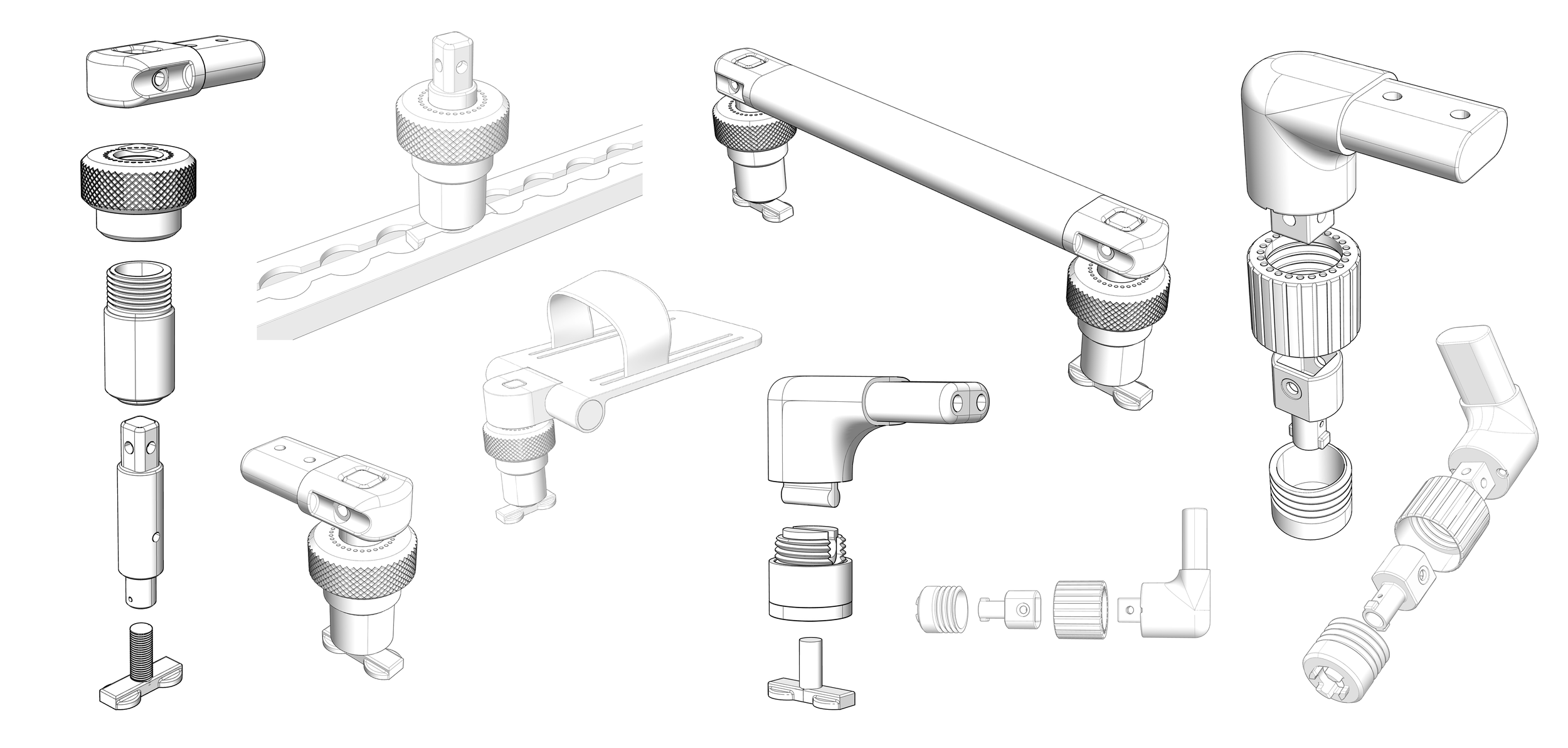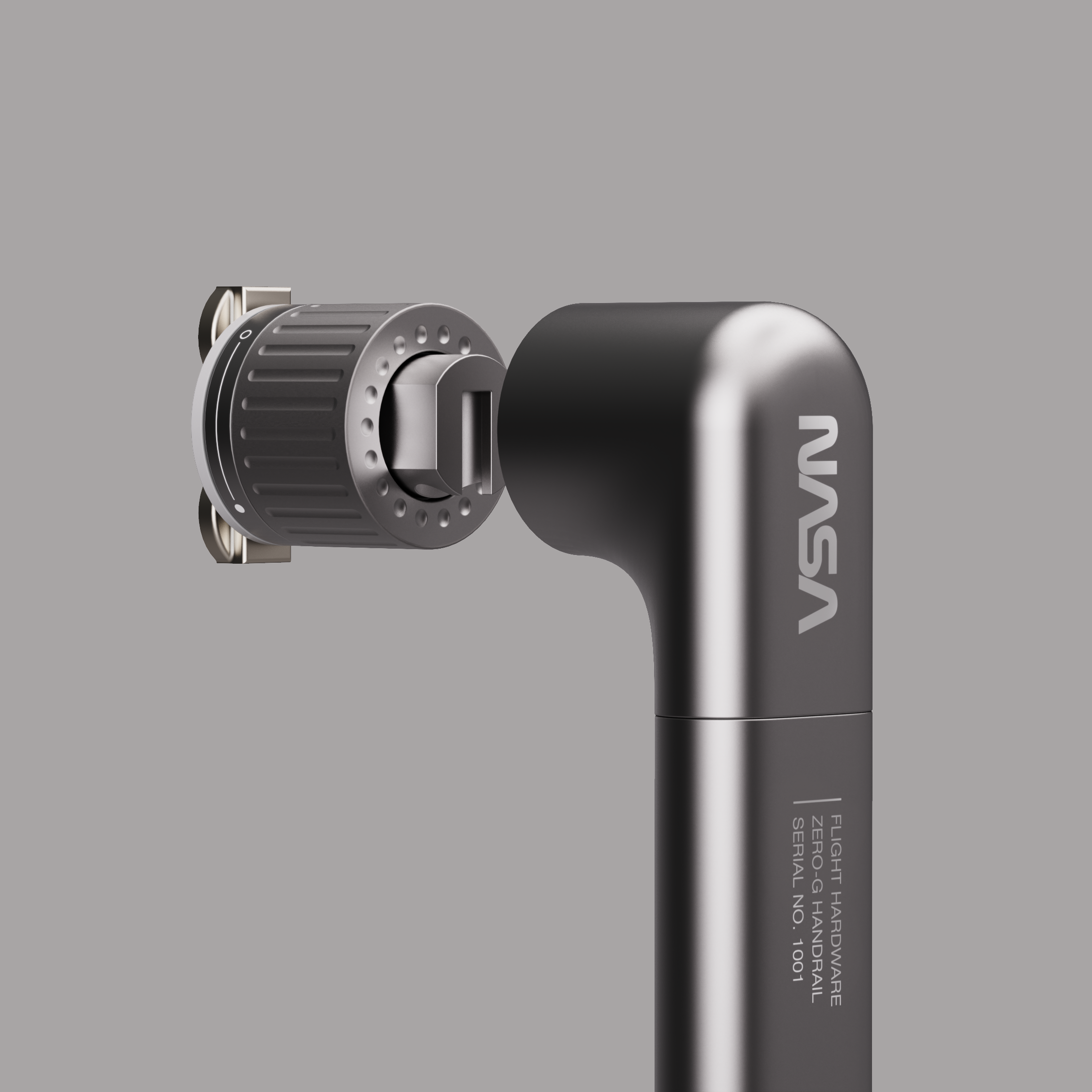Restraint and Mobility Aids
On the International Space Station, traditional concepts of movement and stability are redefined by microgravity, the simple handrail becomes a critical architectural element. Far more than a structural detail, handrails serve as astronauts’ primary means of navigation, anchoring, and stability within the spacecraft. Whether maneuvering through tight modules, performing delicate operations, or orienting themselves in three-dimensional space, crew members rely on handrails for both efficiency and safety. Every contour plays a role in supporting the human body in a zero-g environment—making the handrail an essential interface between astronaut and architecture
Design Challenge
While the ISS handrail has become a standardized and certified component of the station's modular infrastructure—designed to interface with NASA's L-track system and accommodate various mission-critical hardware—it presents notable ergonomic limitations. Its pill-shaped profile, though ideal for gripping by hand, is uncomfortable underfoot—a significant drawback given how frequently astronauts use their feet to stabilize themselves in zero gravity. Complicating the redesign is the need to preserve compatibility with legacy hardware, such as foot restraints and tether points, which depend on the current profile. The new design also had to account for practical constraints aboard the ISS, such as enabling single-hand installation, minimizing floating parts during assembly, and ensuring durability across mission durations. Balancing these factors required a careful blend of ergonomic refinement and strict adherence to existing mechanical standards.
Prototyping & User Testing
To ensure the redesigned handrail met both ergonomic and functional requirements, we employed rapid prototyping through 3D printing to explore and refine form factors. This approach allowed for quick iteration and hands-on evaluation with mockups that closely matched the scale and tactile qualities of the final product. User testing with astronauts and analog environments helped validate grip comfort, foot placement, and ease of installation. Crucially, we also leveraged zero-gravity flight testing to simulate in-space conditions, allowing us to observe real-time interactions with the design in weightlessness. These insights were instrumental in optimizing the handrail’s performance and confirming its compatibility with the constraints of space operations.
Design Solution
The final design introduces a modular system centered around a newly developed component called the Anchor. This Anchor serves as the interface between the handrail system and NASA’s L-track mounting infrastructure, acting as both the structural connection and tightening mechanism. The innovation lies in its versatility: rather than being limited to a fixed handrail, the Anchor enables astronauts to quickly swap between different mobility aids depending on task requirements.
The Anchor features a pill-shaped slot and an integrated magnetic connection, allowing hardware to snap into position with one hand. To change components, users simply back the threaded mechanism all the way down and pull the Anchor free from the attached hardware. The embedded magnet holds the assembly in place during the transition, while a jam wheel locks the connection securely when tightened—offering both flexibility and security in zero-g environments. This system retains compatibility with legacy ISS equipment while expanding the possibilities for more intuitive, task-specific mobility solutions.
Future proofing through modularity
By decoupling the handrail from its mounting system, this design introduces a scalable architecture that supports future iteration without the need to redesign or re-certify the entire assembly. The Anchor acts as a universal interface, meaning that new handrail profiles—or entirely different mobility aids—can be developed and tested independently, then easily integrated using the same core hardware. This modularity not only reduces the cost and complexity of future upgrades, but also aligns with NASA’s evolving needs in low-Earth orbit and beyond. As missions grow more complex and diverse, having a flexible, upgradable mobility system ensures astronauts are supported by tools that can adapt just as quickly as the missions themselves.

















